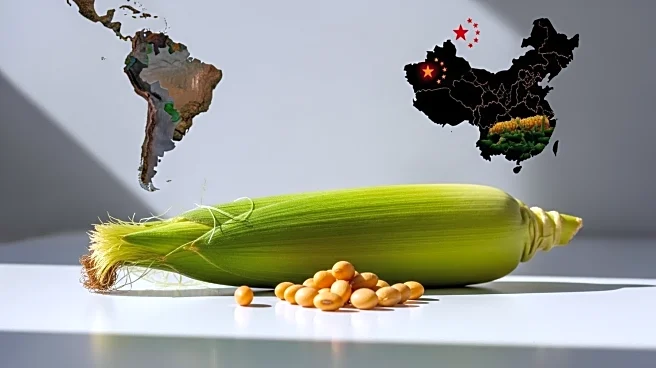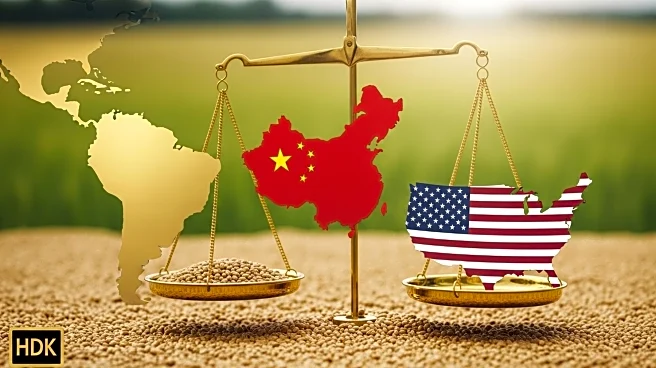What's Happening?
A study has analyzed the grain and oilseed production and consumption dynamics between South America and China since 1980. South America has transitioned from self-sufficiency to becoming a major exporter, with production exceeding domestic consumption by 37% from 2021 to 2025. Conversely, China has shifted from self-sufficiency to becoming a major importer, with domestic consumption surpassing production by 20% during the same period. The combined production and consumption of grains and oilseeds by South America and China have largely offset each other over time, maintaining a stable demand-supply balance. A regression analysis was conducted to assess the impact of South America and China's production surplus or deficit on U.S. grain-oilseed prices, revealing limited explanatory power.
Why It's Important?
The dynamics between South America and China are significant for U.S. grain-oilseed markets. South America's surplus production and China's deficit consumption have implications for global trade patterns, potentially affecting U.S. exports. The study suggests that the close ties between South America and China may not pose immediate concerns for U.S. markets unless South America's production surplus grows significantly. The geopolitical relationship between the U.S. and China, including tariffs, further solidifies South America's role as a supplier to China, potentially reducing U.S. market share. Understanding these dynamics is crucial for U.S. agricultural stakeholders and policymakers.
What's Next?
Future articles in the series will explore trends in U.S. grain-oilseed production surpluses and those of the rest of the world. Additionally, regression analysis will be used to assess the relative impact of production surpluses from the U.S., South America and China, and the rest of the world on U.S. grain-oilseed prices. These analyses will provide deeper insights into global agricultural trade dynamics and their implications for U.S. markets.
Beyond the Headlines
The study highlights the importance of considering historical contexts in evaluating contemporary trade dynamics. Despite geopolitical tensions, the lack of a significant trend in South America and China's combined production surplus suggests stability in their trade relationship. This stability may offer opportunities for strategic partnerships and trade agreements, potentially influencing long-term U.S. agricultural policy.











